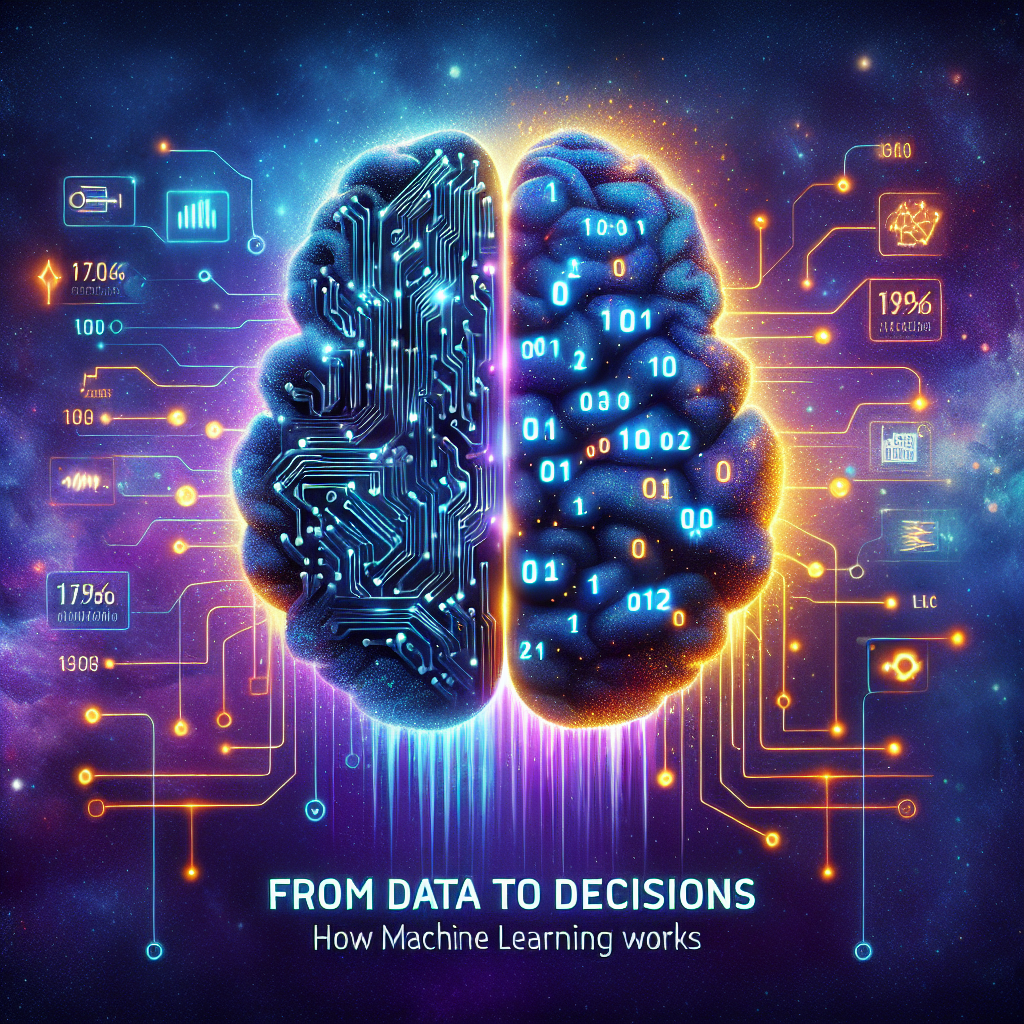In today’s digital era, data is ubiquitous. It’s collected from our smartphones, online activities, social media interactions, and countless other sources. The challenge is not just amassing this data, but making sense of it. Enter machine learning (ML), a transformative technology that’s revolutionizing how we interpret vast data landscapes and make informed decisions.
The Fundamentals of Machine Learning
Machine learning is a subset of artificial intelligence (AI) that enables computers to learn from data without being explicitly programmed. It involves algorithms that improve automatically through experience. Machine learning can be categorized into several types based on specific learning tasks:
-
Supervised Learning: This is the most common type of machine learning. In supervised learning, algorithms are trained on labeled data. Imagine a dataset of emails, some labeled as spam and others as not. The algorithm learns to classify emails by identifying patterns associated with spam.
-
Unsupervised Learning: Here, the data does not have labels. Algorithms identify inherent patterns without prior knowledge. A common use of unsupervised learning is clustering, where data points are grouped based on similarity—for instance, segmenting customers into distinct clusters based on purchasing behaviors.
-
Reinforcement Learning: This approach is akin to training a pet. An agent learns to make decisions by acting in an environment and receiving rewards or penalties. It’s the backbone of technologies like autonomous vehicles and game-playing AIs.
- Semi-supervised Learning: This is a hybrid approach, leveraging both labeled and unlabeled data. It’s especially useful when acquiring large volumes of labeled data is impractical or expensive.
The Machine Learning Workflow
The process of transforming raw data into actionable insights in machine learning involves several key steps:
1. Data Collection
The journey begins with data, the lifeblood of any ML system. The quality and quantity of data significantly influence the performance of the model. Sources vary widely, from sensor data and transactional records to text content and images.
2. Data Preparation
Once collected, data often requires cleaning and preprocessing. This phase involves handling missing values, removing duplicates, and converting data into a format suitable for analysis. It’s crucial to normalize or standardize data to ensure consistency across the dataset.
3. Feature Engineering
Features are individual independent variables that help in making predictions. Feature engineering is the process of selecting, modifying, or creating new features from raw data. Effective feature engineering can significantly boost model performance by highlighting the most impactful variables.
4. Choosing a Model
The choice of algorithm depends on the dataset and the task at hand. For instance, decision trees, neural networks, or support vector machines are some options that might be considered for classification tasks.
5. Training the Model
Training is the phase where the algorithm learns from data. During training, the model adjusts its parameters to minimize prediction error. This is typically done by splitting data into training and validation sets to ensure the model can generalize well to unseen data.
6. Evaluation
Once trained, the model’s performance must be evaluated. Key metrics—such as accuracy, precision, recall, and F1 score—help determine how well the model performs. This step often involves using a separate test dataset not seen during training.
7. Deployment and Monitoring
If a model meets performance benchmarks, it’s deployed into a real-world environment. But the work doesn’t end there. Monitoring ensures the model maintains accuracy over time, adapting to changes in input data or external conditions.
Applications of Machine Learning: Turning Data into Decisions
Machine learning’s capability to analyze vast datasets quickly and efficiently has immense applications across industries:
Healthcare
In healthcare, ML assists in diagnostics and personalized medicine by predicting patient outcomes and suggesting treatment plans. Algorithms analyze medical records and images to identify patterns indicative of diseases.
Finance
Financial institutions leverage ML for credit scoring, fraud detection, and algorithmic trading. These algorithms can process complex patterns in market data far beyond human capability, providing a competitive edge.
Retail
Retailers use machine learning for inventory management, sales forecasting, and customer segmentation. Personalized recommendations enhance customer experience and drive sales.
Transportation
From optimizing logistics to vehicle autonomy, ML is pivotal in transportation. Ride-sharing apps use it for real-time route optimization, while manufacturers incorporate it in developing self-driving cars.
Entertainment
Streaming services employ ML to curate content recommendations, improving user engagement. Machine learning analyzes viewing habits to suggest shows or movies that match user preferences.
Challenges in Machine Learning
Despite its promise, machine learning presents several challenges:
-
Data Quality: Poor data quality can lead to inaccurate models. Ensuring data is clean, relevant, and representative is an ongoing concern.
-
Bias and Fairness: Algorithms can unintentionally perpetuate existing biases in training datasets. Addressing fairness is crucial to develop ethical AI systems.
-
Complexity and Interpretability: Some ML models, like deep neural networks, are complex and act as black boxes with decision-making processes that are hard to interpret.
- Scalability: Handling and processing large-scale data efficiently remains a technical challenge, requiring robust infrastructure.
The Future of Machine Learning
Looking forward, the future of machine learning is promising, characterized by more sophisticated tools and broader applications.
Advances in Algorithms
We can expect advancements in algorithms to support more accurate predictions and efficient learning processes, reducing the need for large volumes of labeled data.
Enhanced Interpretability
There is a push towards creating ML models that are not only powerful but also interpretable, facilitating greater trust and transparency in AI decisions.
Integration with Other Technologies
Machine learning will continue to integrate with other technological advancements, such as the Internet of Things (IoT) and blockchain, to enable smarter and more secure systems.
Ethical AI
As AI systems increasingly influence societal decisions, developing ethical AI frameworks that ensure fairness, accountability, and transparency will be both a challenge and a necessity.
In conclusion, machine learning is a powerful tool that turns vast amounts of data into insightful and actionable decisions. As technology evolves, the impact of ML will deepen, changing how we live, work, and interact with the world. Embracing the transformative potential of ML with a mindful approach to its challenges will be crucial in shaping a future that’s both innovative and inclusive.




